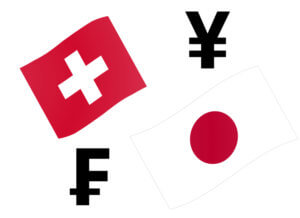Introduction
CHF/HKD is the abbreviation for the Swiss Franc against the Hong Kong Dollar. It is categorized as an exotic currency pair that usually has high volatility and low trading volume. Here, the CHF (on the left) is the base currency, and the HKD (on the right) is the quote currency.
Understanding CHF/HKD
The market price of CHF/HKD represents the value of HKD that are obliged to purchase to one CHF. It is quoted as 1 CHF per X HKD. If at all the market price of this pair is 8.1718, then this amount of HKD is required to buy one CHF.
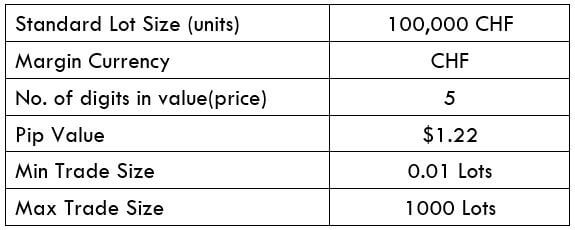
Spread
The difference between the bid-ask price is described as the spread. Its value differs from the ECN account model and STP account model. The approximate value for the two is specified below:
ECN: 35 pips | STP: 40 pips
Fees
A fee is a price that one pays to the broker for executing a trade. There is no fee charged on STP accounts, but a few pips are charged on ECN accounts.
Slippage
The difference between price called for by the client and price that was offered by the broker is described as the slippage. Its value varies on the volatility of the market and the broker’s execution.
Trading Range in CHF/HKD
The trading range is that the tabular representation of the pip movement of a currency pair in several timeframes. These values are useful in determining the profit, which will be generated from trade in advance. To seek out the worth, you need to multiply the below volatility value with the pip value of this pair.
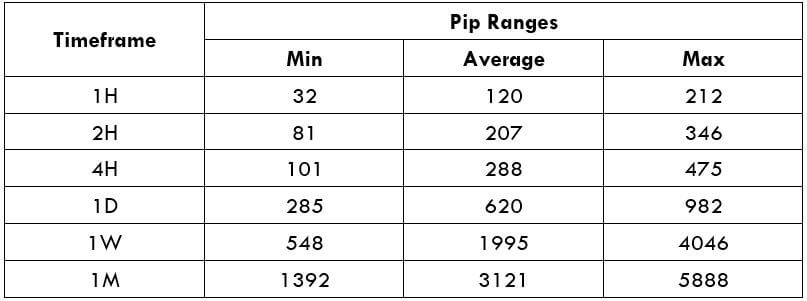
Procedure to assess Pip Ranges
- Add the ATR indicator to your chart
- Set the period to 1
- Add a 200-period SMA to this indicator
- Shrink the chart so you can assess a large time period
- Select your desired timeframe
- Measure the floor level and set this value as the min
- Measure the level of the 200-period SMA and set this as the average
- Measure the peak levels and set this as Max.
CHFHKD Cost as a Percent of the Trading Range
By implementing the total cost to the mentioned table, we can ascertain the cost differences in a trade. The values are attained by finding a proportion between total cost and volatility value and are indicated as a percentage.
ECN Model Account
Spread = 35 | Slippage = 5 |Trading fee = 8
Total cost = Slippage + Spread + Trading Fee = 5 + 35 + 8 = 48
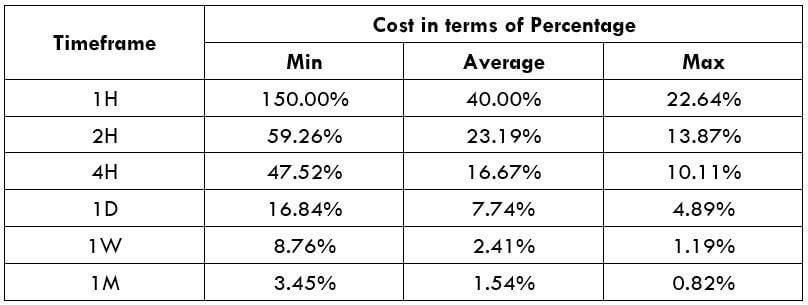
STP Model Account
Spread = 40 | Slippage = 5 | Trading fee = 0
Total cost = Slippage + Spread + Trading Fee = 5 + 40 + 0 = 45
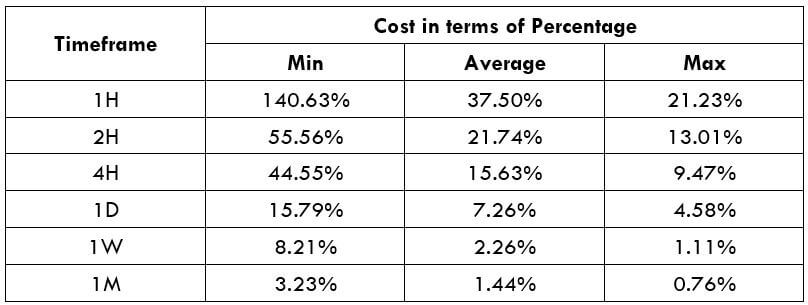
The Ideal way to trade the CHF/HKD
Comprehending the above tables is important. The ratio to the total cost of trade is directly proportional to the value. It is seen that the rates are nearly high on the min section (less volatility) and the other way around. Now, the perfect chance to enter the market would be the point at which the volatility of CHF/HKD is somewhere between the average pip movement. Trading this pair during such minutes will guarantee low trading costs just as lower liquidity.
You can reduce the trading costs by placing orders using limit/pending orders instead of market orders. This will considerably reduce the total cost with slippage being zero. I hope this article will assist you in trading this pair in a much efficient way. Cheers!



